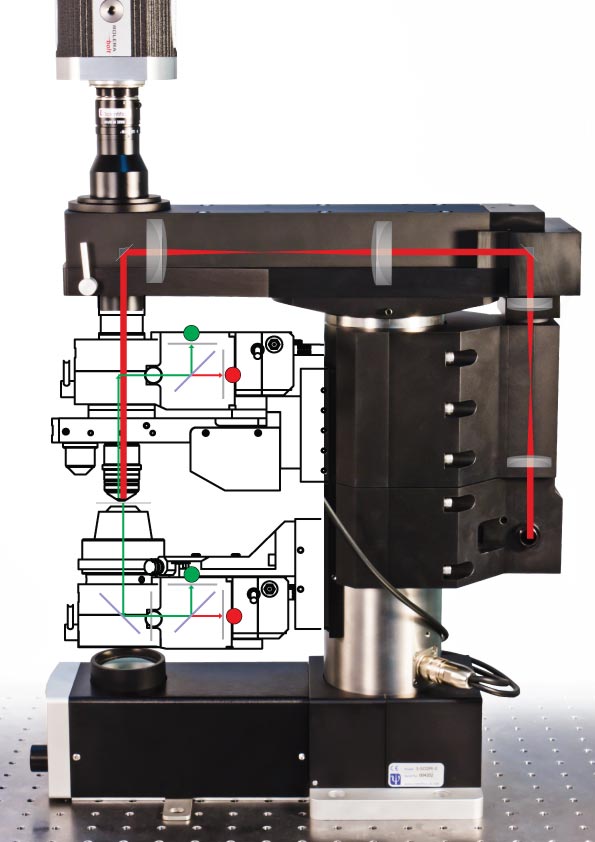Scientifica’s 2p scope

With its newly introduced scan head, Scientifica’s 2p scope is finally a complete package. They’re happy to sell their modular design in pieces, so this fills the void between fully custom rigs and turnkey systems.
The scan head uses a relay lens system (a.k.a., a 1:1 telescope) between the x- and y- galvo mirrors. Most scopes opt to simply put the x- and y- galvo mirrors as close to each other as possible. The inclusion of a relay system is an interesting choice. Although not unheard of in 2p scopes or laser scanning scopes in general, I suspect they might become very popular for some fields of research. Here’s why…
Including a relay lens ensures that the laser beam hits the same spot on the second galvo mirror at all points in the scan. This minimizes the variability in laser intensity and focus over the field of view. Leaving the relay out and simply putting the two galvo mirrors as close as possible is a viable solution when the separation between the mirrors is much less than the focal length of the scan lens (pdf) because this minimizes the distortion. However, two trends are making this condition less common in 2p scopes:
(1) Large back aperture objectives, which result from low magnification combined with high NA, require an aggressive magnification of the laser beam. Going from 3 mm scan mirrors to a 20 mm back aperture, requires a 6.7x beam expansion (or more), which in turn requires shorter focal length scan lenses. Alternatively, the scan mirror size can be increased, but then this increases the separation between the mirrors. In both cases, this increases the problem.
(2) Experiments where large fields of view are scanned make the performance at high scan angles matter. At small scan angles, the distortions are not significant, but when scanning at high angles, this becomes an issue. Since more and more people are buying low magnification objectives, I’m guessing they care more about the performance at high scan angles than people in the past did. For example, for dendritic spine imaging, it’s about resolution more than field of view. But if you bought a 16x objective for 2p imaging, you might not want to limit yourself to a 100 micron field of view, and these distortions matter to you.
[…] new optical design is also available for the galvo scanhead. Alternatively, they also still have their original galvo system […]